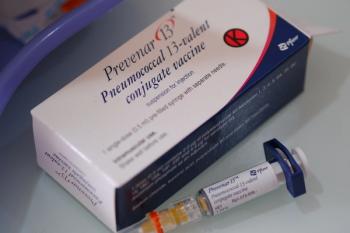
New GOLD Strategies for COPD Management
Updated guidelines shift assessment emphases.
The
One shift reflects the pharmacist’s ability to assess COPD symptoms and thereby measure the success of a patient’s current treatment. While the guidelines continue to value spirometry as a way to assess COPD symptoms, they also place more emphasis on the diagnostic ability of the COPD Assessment Test or CAT score, a simple test that asks patients to rate their symptoms.
“There’s more emphasis on that then there was a couple of years ago,” says
While a pharmacist may not be able to grade a patient based on spirometric data, they can group patients based on the CAT score and the frequency of COPD flare-ups.
Trending:
“The CAT score is something that is readily available to pharmacists,” said Prosser. “They can ask patients to fill it out when they come in to fill prescriptions.”
Pharmacists have access to further information that can confirm a patient’s report.
“A pharmacist has refill data,” says Prosser. “In addition to asking when a patient had a respiratory episode, which would be subjective, a pharmacist has objective information in the dispensing software.”
With an increasing array of COPD medications, patients may have prescriptions for multiple inhalers. Each inhaler may come with different instructions that have to be followed carefully to achieve optimal results. Not only can this be confusing for patients, potentially interfering with adherence, but COPD medications are often prohibitively expensive. Costs are multiplied when patients use an array of medication. Using CAT data can help a pharmacist recommend an effective regimen, which can increase adherence.
“A pharmacist can recognize that the patient is getting multiple devices and ask, ‘Is there a way to combine these medications into fewer inhalers?’ They can also look at the patient’s insurance and see what the tiers of copay might be.”
Whatever medication COPD patients take, medication does not achieve optimal results if it is not taken correctly.
“The whole premise of giving inhaled therapy is based on delivering medication to the lungs, and poor technique means the drug does not make it to the lungs,” says Prosser. “Poor technique is unfortunately extremely common. The guidelines do place strong emphasis on the need to instruct patients on their devices and ideally you should ask patients to demonstrate their technique to you to make sure the technique is correct. Checking of technique should be done frequently, especially before you decide to step up therapy.”
There are several ways pharmacists can help patients manage COPD, including recommending or administering flu and pneumonia vaccines, and helping patients with smoking cessation. While the latest guidelines emphasized non-tobacco particulate exposure as a cause of COPD, smoking is still the most common risk factor.
‘Pharmacists could play a role in tobacco cessation by recommending over-the-counter products,” said Prosser. “In some states, there’s a movement to get pharmacists increased prescribing authority.”
By assessing COPD management programs pharmacists can work with patients to make those programs more effective.
Newsletter
Pharmacy practice is always changing. Stay ahead of the curve with the Drug Topics newsletter and get the latest drug information, industry trends, and patient care tips.





























































































































